Graz On the Mur River
The second largest city in Austria
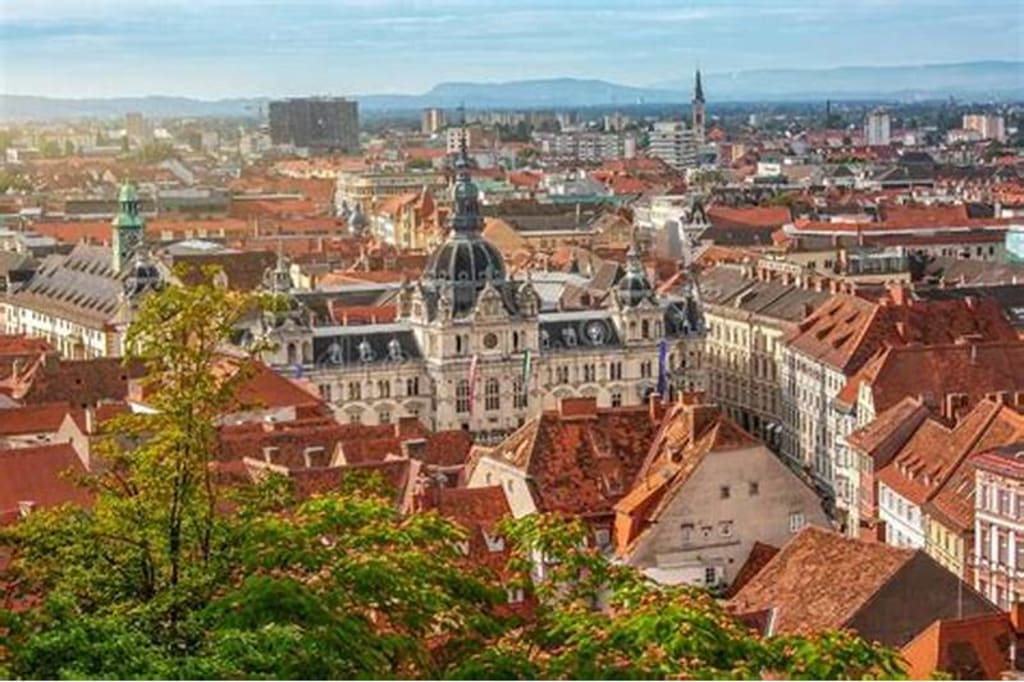
The capital of Styria and Austria’s second-largest city is Graz. It has a lovely location in the shadow of Schlossberg hill and is situated on both sides of the Mur River. There are beautiful views all around and the city itself is charming with lots to see and delight in. It was actually the castle upon The Schlossberg that gave the city its name. It came from the Slavonic word Gradec for “little castle” and later became Graz.
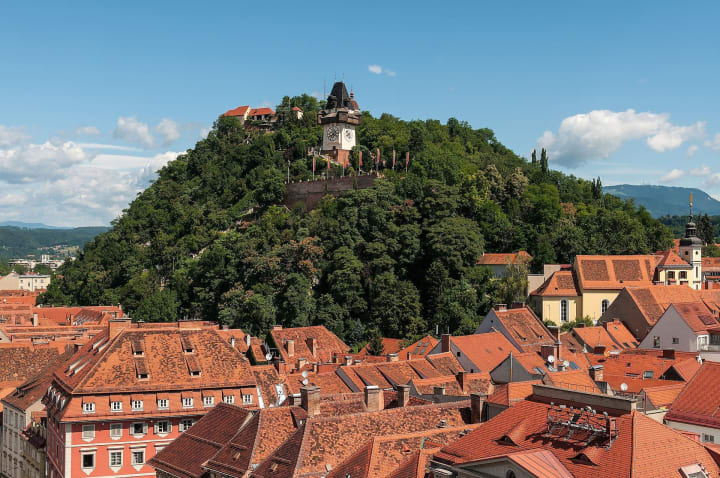
It is the Schlossberg that attracts people, especially in the springtime and the summertime. You can walk under shady trees and see open-air performances. In the autumn people head up the hill to see the many different autumn colors and in the winter to wander among the freshly, white fallen snow.

To reach the top you have your choice of the modern funicular – Schlossbergbahn with new observation cars. There is a lift, or you can walk up.
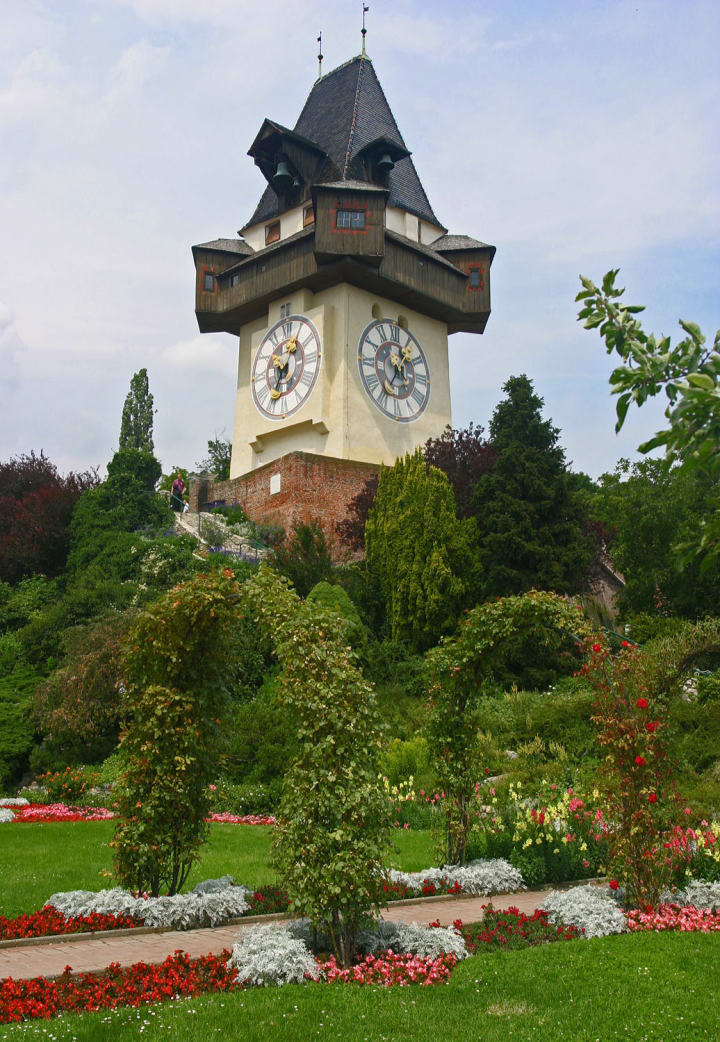
Highlights atop this 473m hill are the 28m tall Clock Tower, which is the city’s best-known landmark, the 94m deep Turkish Well, and the 35m tall Belfry or Glockenturm. The bell tower dates from the 16th century and is home to the heaviest bell in Graz, known as the “Liesl”. To reach the Clock Tower you can take a modern glass lift, the funicular, or walk up the 660 steps. From the top, there are breathtaking views of Graz and the surrounding area.
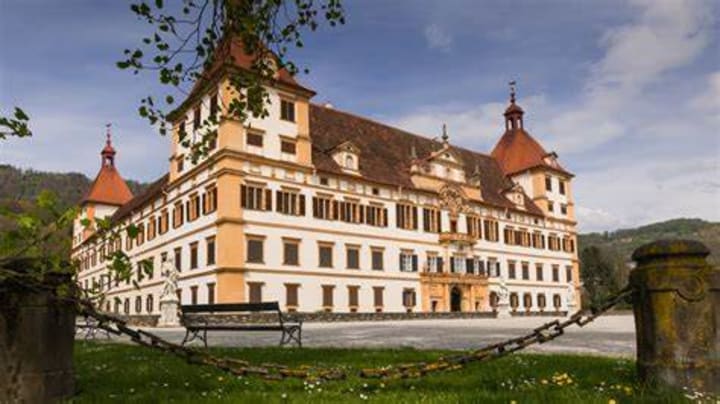
Sitting pretty on top of the hill is Schloss Eggenberg, an impressive Baroque palace dating from 1635. It has four large towers, wonderful state apartments, and is rich with Rococo decors.
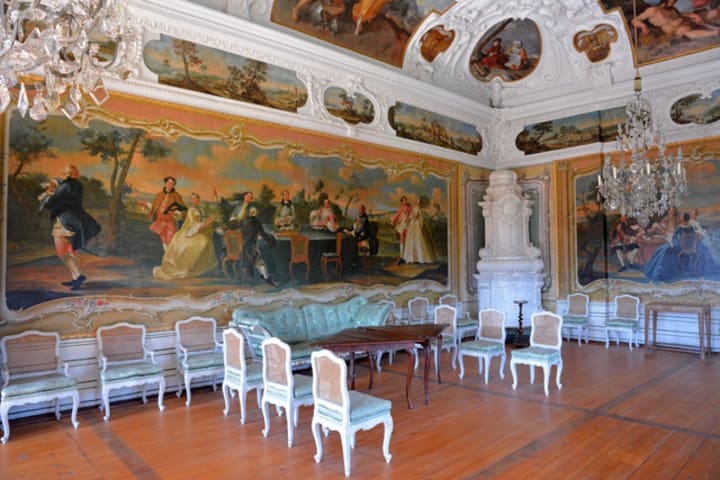
The highlights on the interior are the walls and ceilings of the Banquet Hall, a masterpiece of Baroque architecture with over 600 amazing works of art including the signs of the zodiac and the planetary system. This theme is continued in the Reception Room which is referred to as the Room of the Planets. It is part of a suite of 24 staterooms decorated by Styrian artist Hans Adam Weissenkircher.
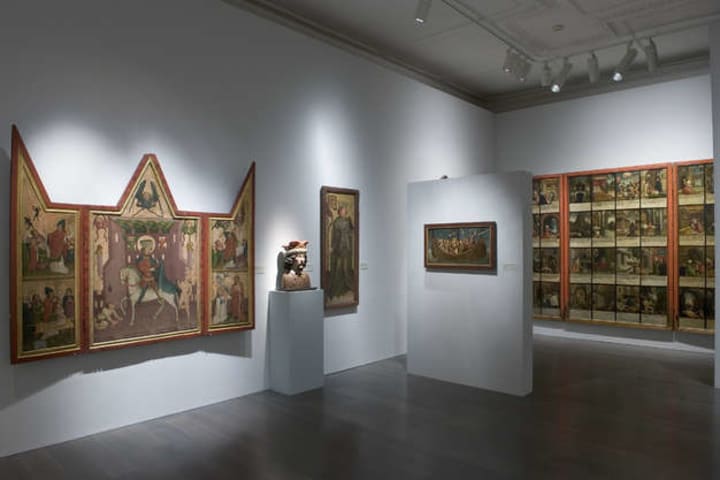
The Alte Galerie offers a collection of wonderful artwork that includes the famous Admont Madonna dating from 1320, the Lambrecht votive tables from 1440, and many more Baroque sculptures and paintings. There are guided tours available in English.
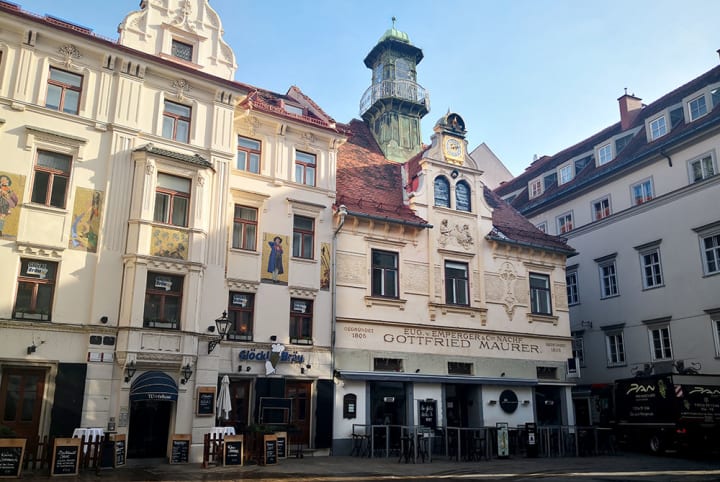
Head for the Glockenspielplatz to see the interesting Glockenspiel clock. Three times during the day residents and tourists gather here to listen to and watch the clock.
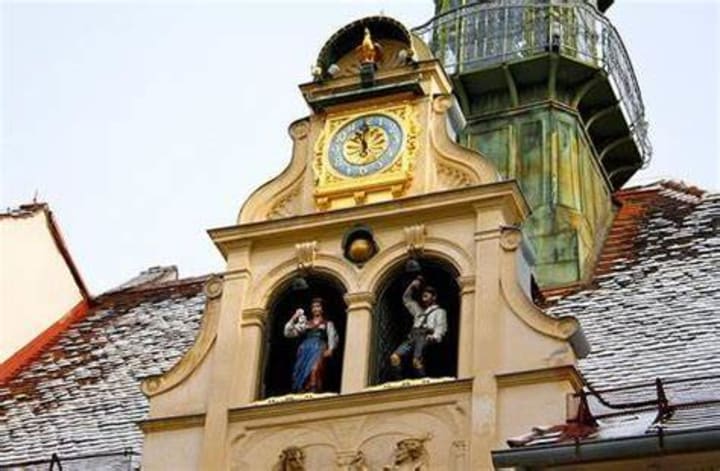
The Graz carillon chimes play three melodies and in the gable windows, you’ll see a wooden couple in proper costume dancing to the music. At the end a golden cock crows three times “kikeriki” the German translation for “cock-a-doodle-doo”. The show can be seen at 11 AM, 3 PM, and 6 PM.
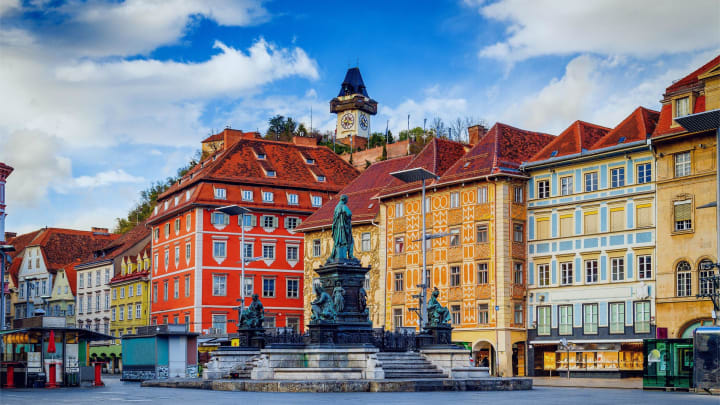
The very heart and soul of Graz is the Old Town. Here medieval architecture mingles with the modern. It’s a great place for walking and is a UNESCO World Heritage site.
Some of the highlights of the Old Town are the Hauptplatz, the main square on the left bank of the Mur River with its impressive statue of Archduke Johann, the Town Hall, and the 17th-century Haus am Luegg.
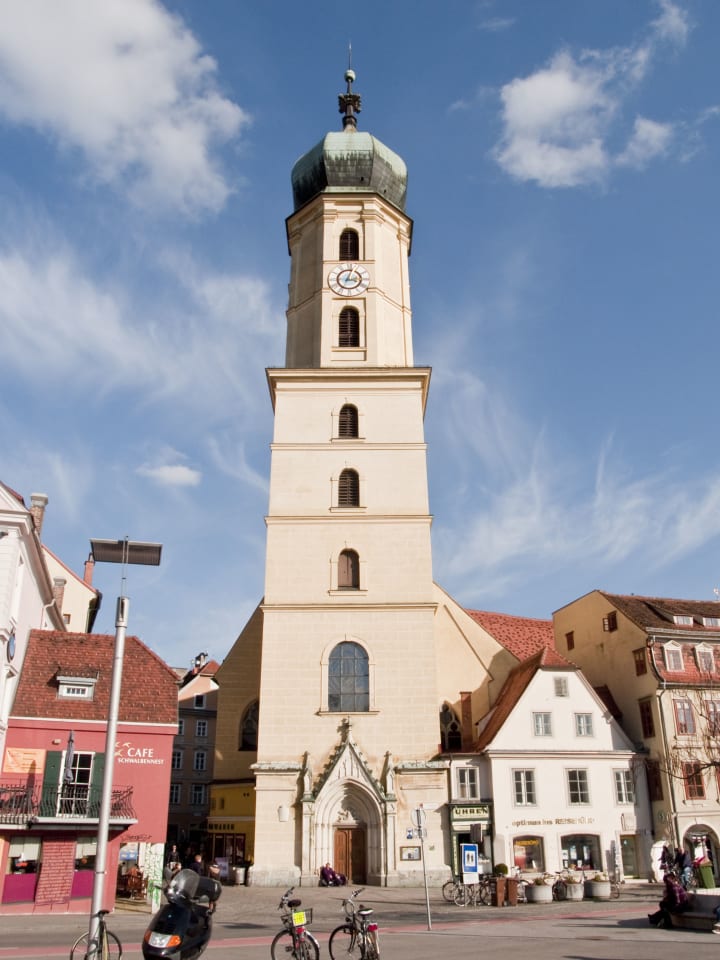
On the west side of the square is the Gothic Franciscan Church known for its west tower dating back to 1643 and its late Gothic nave with a ribbed, vaulted ceiling. Worth taking a look at is the church’s Chapel of St. Anthony with its pieta dating from 1720. Other sights to delight in include the Graz Municipal Museum.
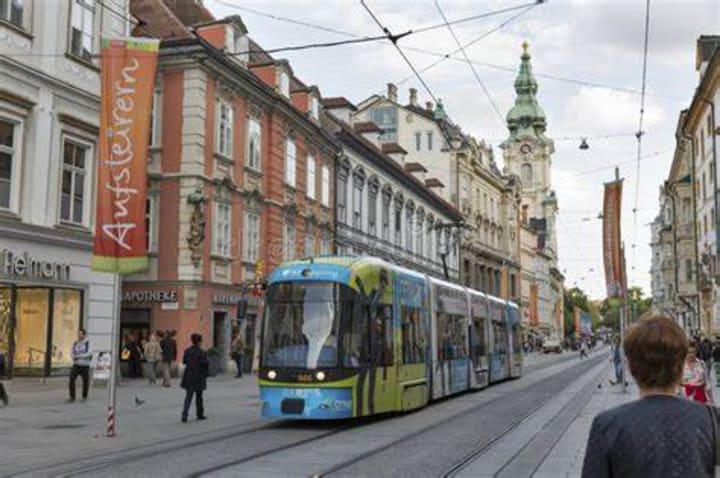
Take a walk along the Herrengasse pedestrian street and see the lovely old mansions, including the Painted House that has frescos from 1742. There are art galleries, shops, and cafes to enjoy as well.
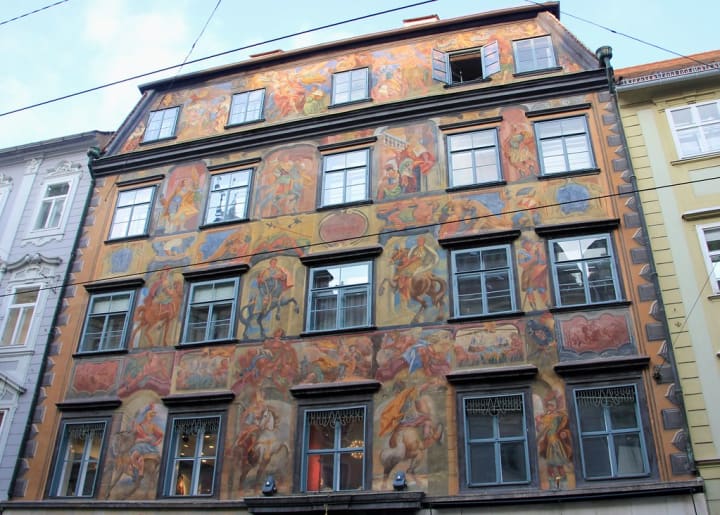
Imagine walking along the street and discovering a house that looks like it is covered in tattoos. That is the Painted House and it was first painted in 1600. The artwork of Baroque painter Johann Mayer, who created the frescos in 1742, and this was when the house got its name.
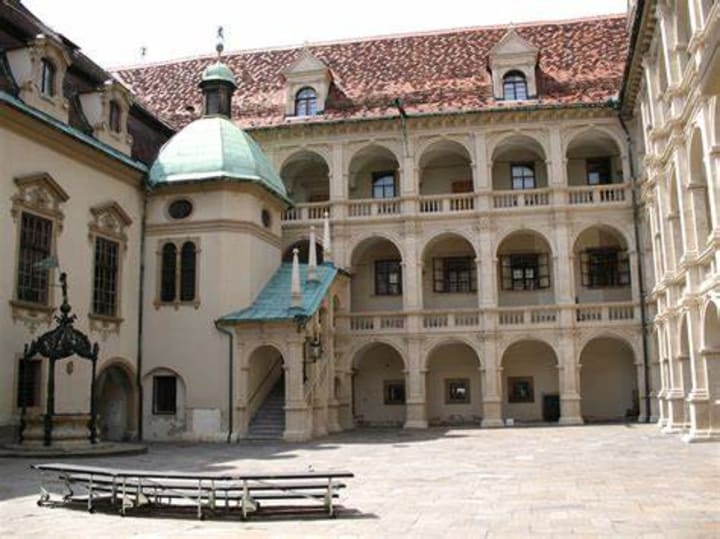
Visitors enjoy seeing the majestic Landhaus which is home to the Styrian provincial government. It was built in Renaissance style in 1565 and is looked upon as one of the finest buildings in Austria. Going through the amazing main facade with rounded windows and a loggia you step into a wonderful arcaded courtyard with its three-storied pergolas on two sides and a lovely Renaissance fountain. On a regular basis, outdoor concerts and theater performances are given here. Inside you’ll be impressed by the Knight’s Hall with its amazing stucco ceiling dating from 1746.

Visitors admire the architecture of Graz Kunsthaus. This is a contemporary art museum that at first glance looks like a rather large, blue whale. It is striking to see it among the other buildings in the historic city center. It lies on the right bank of the Mur River. It is the creation of British architects Peter Cook and Colin Fournier. The biomorphic construction certainly contrasts with the surrounding gable houses with their red roofs. This incredible building consists of 1,066 acrylic glass elements and at night sends light signals or written messages from its “BIX facade” to the other bank of the river. It brings daylight into the building through the “nozzles” on top. Its “needle” is a viewing platform stretching into the sky on the eastern facade. The transparent base of the Kunsthaus is home to a restaurant and a media lounge. Visitors enter the building on a travelator, a slanted moving belt. Exhibitions are on two floors and it is all exclusively about art. At night it is all lit up just like a spaceship that has just landed.
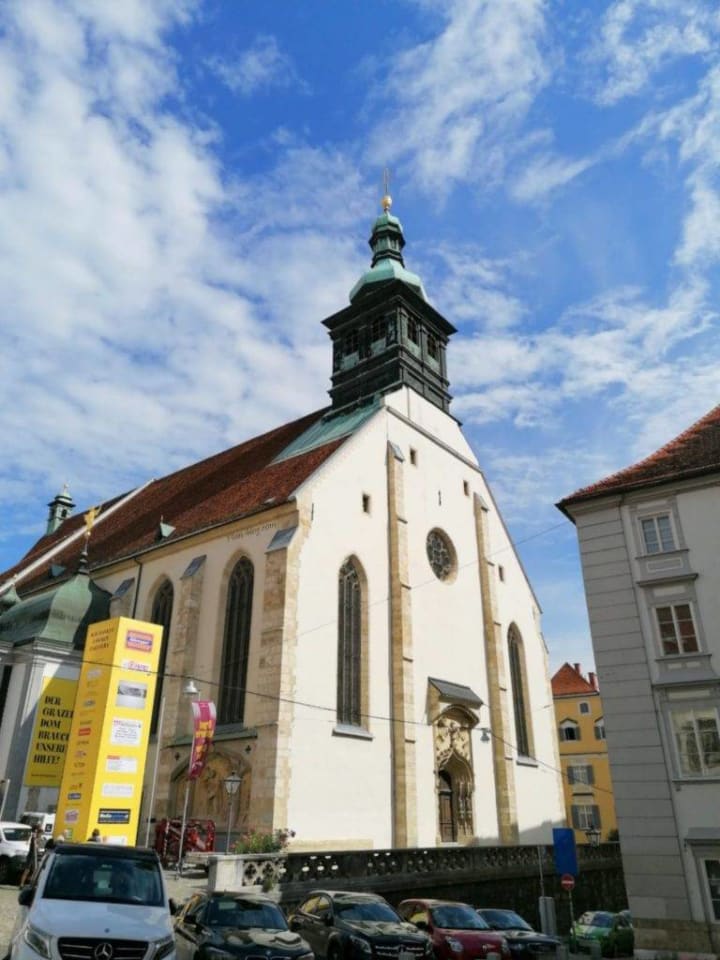
The late Gothic St. Gile’s Cathedral was built between 1438 to 1462 on the site of an earlier church. Of particular interest is the main doorway which is decorated with the coat of arms of its builder, Emperor Frederick III. On the south external wall which faces onto a small square are the remains of a late Gothic fresco from 1485 called the Landplagengild. It depicts Graz being threatened by pestilence, the Turks, and a plague of locusts. The Baroque interior is very impressive with a wide nave separated from the choir by a narrow triumphal arch flanked by two reliquaries from 1477. The choir is dominated by a high altar and is noted for its altarpiece which portrays the Miracle of St. Giles. Take the time to visit the adjoining mausoleum that was built in the early 1600s for Emperor Ferdinand II and is noted for its Tomb Chapel with intricate artwork and sculptures.
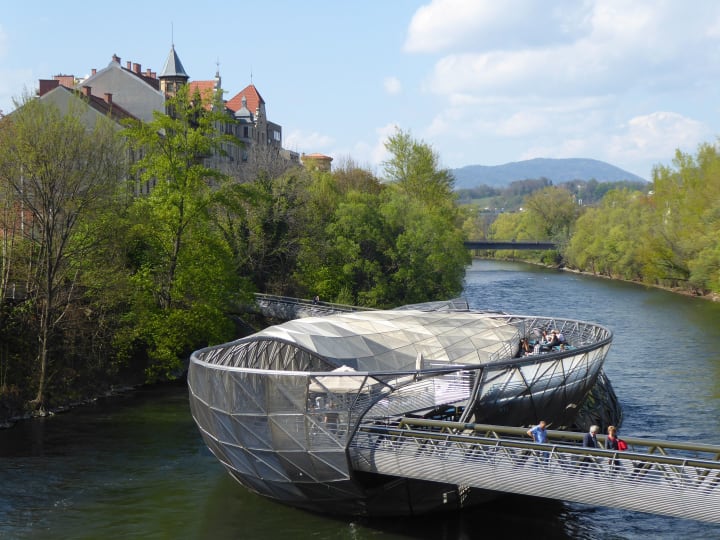
Murinsel is a ship anchored in place and connected to both river banks by two footbridges. At night it glows bright blue sitting on the Mur River. This is an amazing steel structure created by American artist Vito Acconci. It is a great place to have coffee or cocktails in the cafe watching the river flow by.
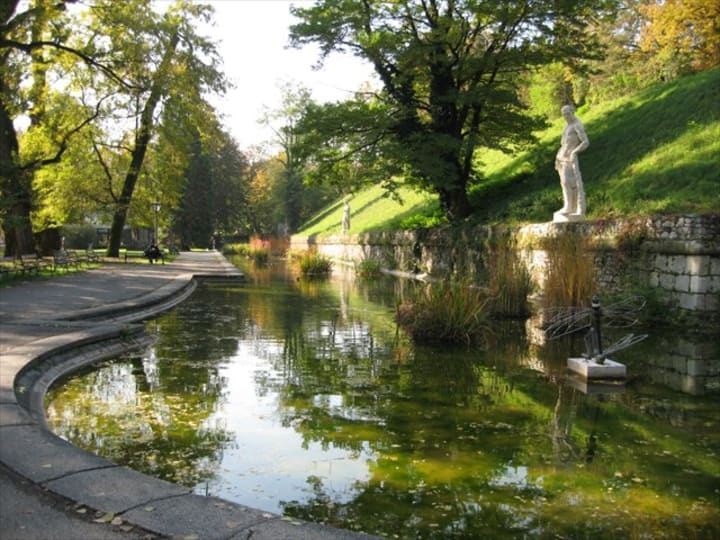
Visit the Graz Stadtpark with its modern Opera House. It was laid out in 1869.
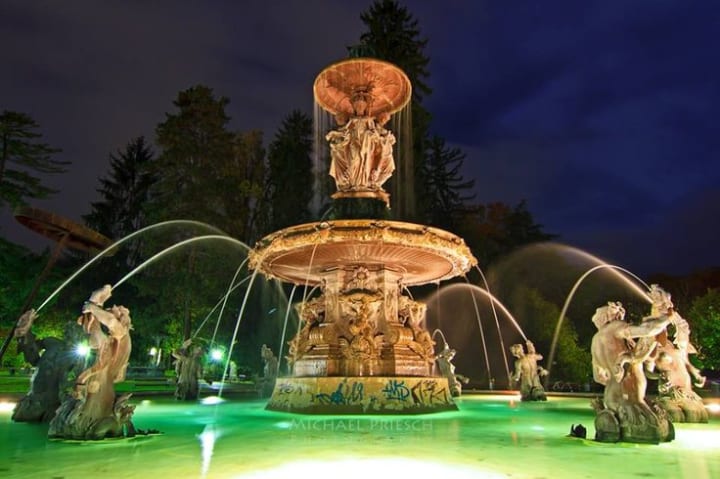
The highlight of the park is the Emperor Francis Joseph Fountain which is surrounded by many different figures and monuments among them famous Austrian writers, scientists, and politicians.
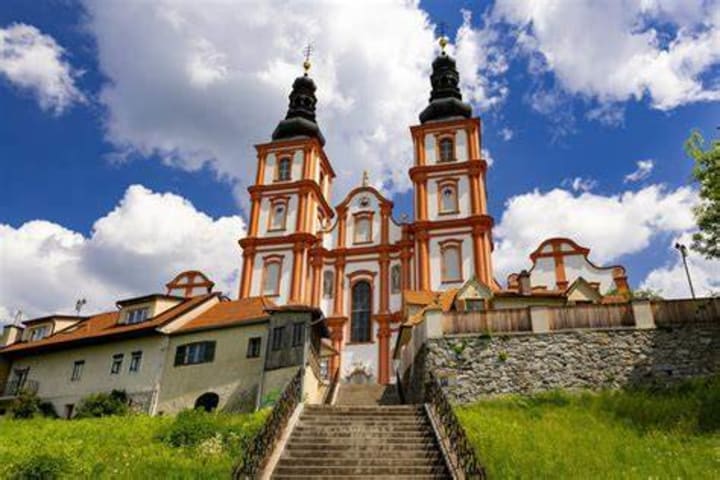
Mariatrost Basilica sits on Purberg Hill and is one of the best-known pilgrimage destinations in Styria. Pilgrims from all over Europe come here to climb the 216 steps to the basilica that rises high into the sky. You’ll find the holy shrine to the Virgin Mary, beautiful frescos, and an impressive pulpit at this twin-spired church.
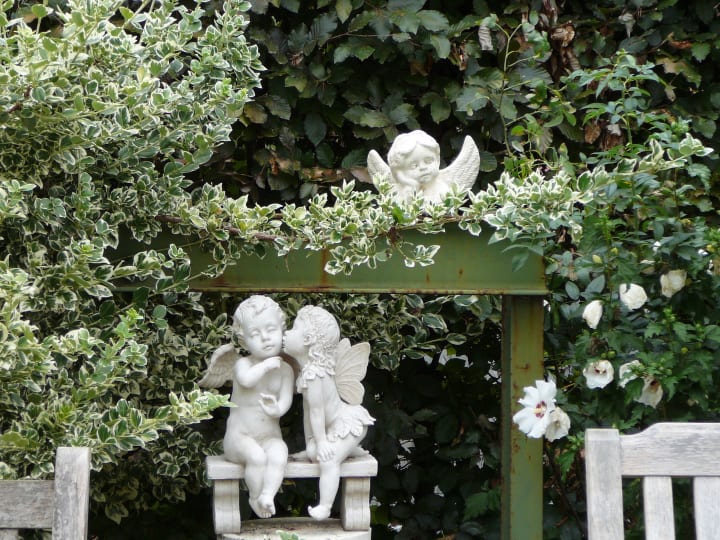
For the love of roses visit the Giovannis Garden where there is the largest collection of roses in Austria and a lovely arboretum. This 2.5-hectare art garden has many rare plants, unusual art objects, exotic scents, and ancient Celtic truths. It is a place for peaceful relaxation.
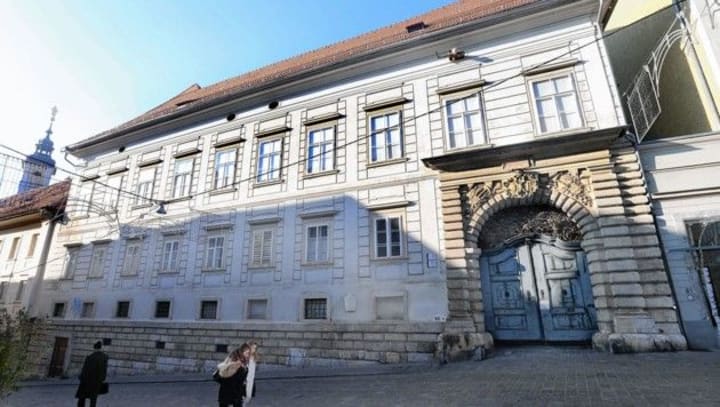
You might wonder why there is a threatening figure of a man with a beard, turban, and dagger gazing at you from the top of this building. By now the well-known Turk decorates the roof of the Palais Saurau which is one of the finest buildings in Graz.
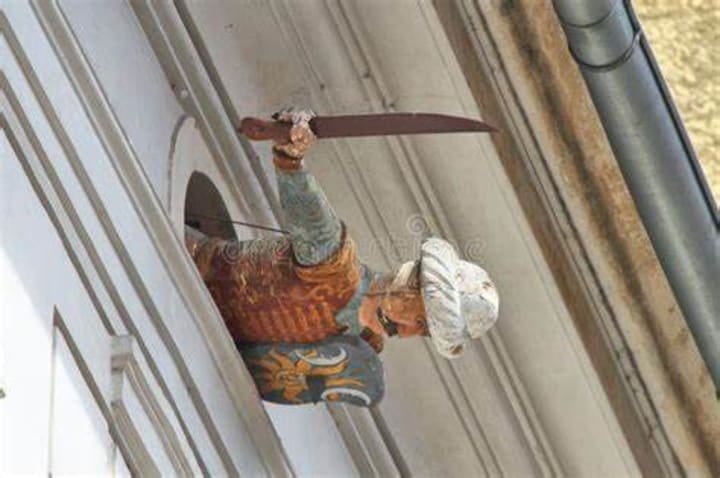
It has an impressive Baroque wrought-iron gate, Renaissance arcades in the courtyard, and wonderfully decorated first-floor halls. You’ll discover the history of the Saurau family here.
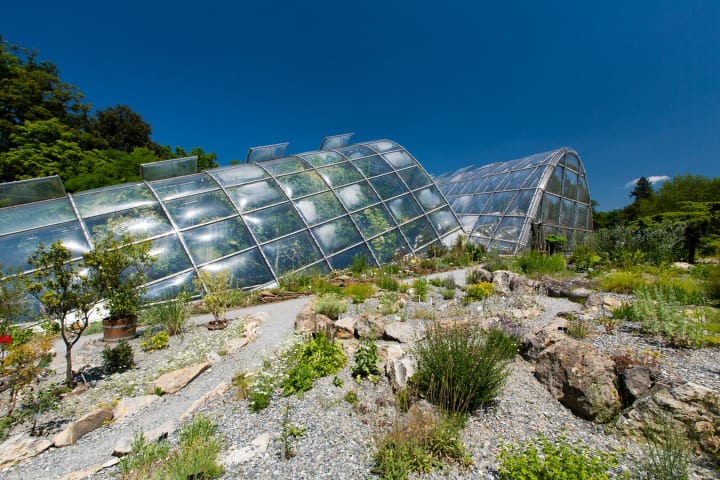
The Botanical Gardens resemble a large exotic animal. The garden greenhouses lie among Art Nouveau mansions in one of the most beautiful districts in the city. Here you’ll find exotic flora from four distinct climatic zones. The tropical or warm house has tropical plants, orchids, and mangrove plants. In the cold house, you’ll find Mediterranean vegetation with citrus plants and eucalypts. The temperate house has cacti and other plants which love aridity. Visitors walk along wooden gangways and bridges through the four different climes.
Enjoy reading about the lovely city of Innsbruck by following the link below:
https://vocal.media/wander/innsbruck-on-the-river-inn
Please follow the link below to read about Saltzburg the Austrian city where the musical "The Sound of Music" was filmed:
https://vocal.media/wander/salzburg-on-the-salzach-river
About the Creator
Rasma Raisters
My passions are writing and creating poetry. I write for several sites online and have four themed blogs on Wordpress. Please follow me on Twitter.






Comments
There are no comments for this story
Be the first to respond and start the conversation.